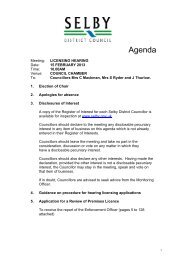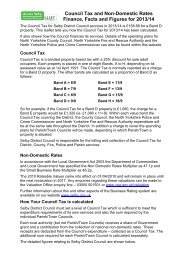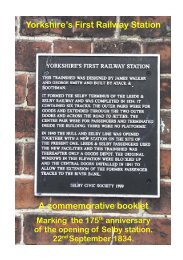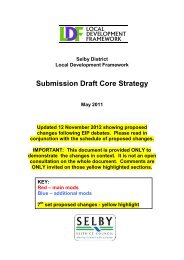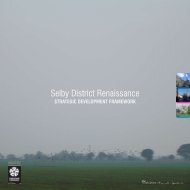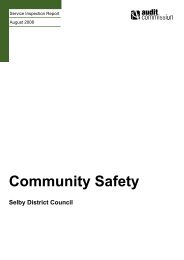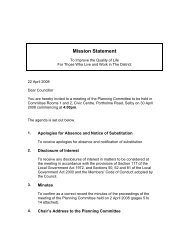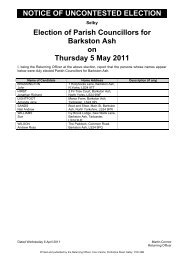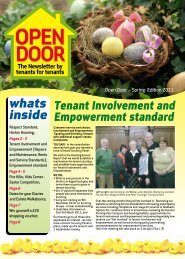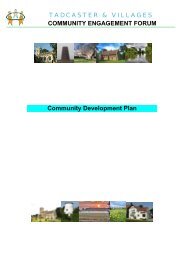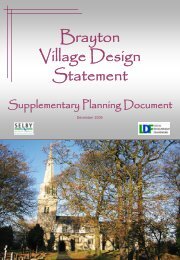Final Economic Viability Report September 2009 - pdf
Final Economic Viability Report September 2009 - pdf
Final Economic Viability Report September 2009 - pdf
You also want an ePaper? Increase the reach of your titles
YUMPU automatically turns print PDFs into web optimized ePapers that Google loves.
Study Approach<br />
1.5 It has been important for the study to test viability of different site types in different locations, in order<br />
to understand how viability varies with site size, values, tenures and locations. It has, therefore, been<br />
necessary to develop a typology of the different types of sites that are likely to come forward for<br />
housing development in Selby and to test the viability of these hypothetical sites under a set of<br />
different development scenarios.<br />
1.6 The typology of sites to be assessed was developed in conjunction with SDC and stakeholders to<br />
reflect the authority’s current policies and their experience of the range, size, type and locations of<br />
sites which they would envisage would come forward through the planning system for the future<br />
provision of housing.<br />
1.7 This approach allows different policy options to be tested in a consistent manner across the range of<br />
likely development scenarios. This would not be possible in the same way had the study focused on<br />
actual real life sites where the particular features of those sites would inevitably have made it difficult<br />
to generalise about viability and compare scheme results.<br />
1.8 Central to the assessment of the viability of housing development is the concept of residual land<br />
value. 1 Residual land value is the value that can be attributed to land, when the total cost of<br />
development, including an allowance for profit, is deducted from the sales values of housing built on<br />
site. If there is a residual land value that is higher than the existing use value then the development<br />
can be deemed viable; if it is below, then the development will not be considered viable.<br />
1.9 The majority of developers assess the viability of a prospective development by calculating residual<br />
land value. Having calculated its residual project value, developers use discounted cash flow 2<br />
analysis to calculate the Internal Rate of Return (IRR) 3 for the project (see Appendix 1). The IRR<br />
calculation allows different investment options to be compared on a like for like basis. The higher a<br />
project’s IRR, the more desirable it is to undertake.<br />
1 To read this valuation approach is applied for property with development or redevelopment potential. This<br />
equation is: Completed Development Value less Planning and Construction cost less on cost and finance<br />
costs less Developers Profit = Residual Land Value.<br />
2 A Discounted Cash Flow (DCF) valuation approach is used to value a project using the concept of time<br />
value of money. All estimated future cash flows are discounted by a percentage value usually representing<br />
interest on finance to return the future cash flows to a present value.<br />
3 IRR – rate of interest at which future outflows and inflows of money are discounted to return a 0 net<br />
present value.<br />
Page | 6



